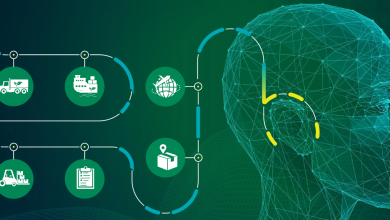
There’s always a lot of chatter about the next great innovative use of automation. While it’s appropriate for businesses to have their sights set on the horizon, sometimes it can be difficult to know which pioneering use of automation is worth your investment.
For many organisations, 2022 will be all about recovery and resilience. They’ll be looking for ways in which automation can help make the business run more efficiently and support employees in their work – wherever it is they’re working.
With this in mind, I see three main uses for automation that businesses should invest in, in order to be prepared for 2022.
1. Invest in automated process discovery
One of the ways to improve resiliency is through understanding how your business is truly operating. Automated process discovery can help you understand how your processes are really working.
Look at investing in technologies such as process, task and conversation mining.
Right now, you could be manually reviewing your processes, but the manual review has a couple of issues.
Firstly, the rise of remote working makes manual reviewing more difficult. You need to be able to review the entirety of the process and may end up over-documenting processes as a result. That can lead you to automate processes that don’t need to be automated.
Then there’s the sheer breadth of processes that need reviewing. Ideally, you’d have multiple people reviewing the process simultaneously, which makes it more likely that you’ll end up automating the right processes.
With many organisations choosing to keep their virtual working structure – or maintain a hybrid operation – the need for automated process discovery (that makes the process more efficient and easier) becomes apparent
2. Use intelligent automation to scale RPA
Once you start your journey towards using robotic process automation (RPA), you see that the automation you use – while helpful – isn’t intelligent. It’ll do the job you need it to, but to take automation to the next level, you need to introduce intelligent automation.
You can use intelligent automation to do things like review invoices, read emails, make decisions on loan applications and engage in simple communication with customers. RPA can’t be used to automate more important or complex tasks, not by itself anyway. It needs additional capabilities built-in – or human support.
There are many providers out there offering tools and services that will enhance RPA platforms, bringing them the additional capabilities your business needs to scale RPA, but discernment is crucial.
When considering bringing in a new capability, it’s best to do so with the specific challenge in mind, rather than choose a catch-all solution that may be much more than you currently need. Instead, choose technology that helps you expand the areas that you know you’ll need support in
3. Consider using process intelligence to monitor the health of your processes
We’ll see more organisations use process intelligence to monitor their processes – especially their manual ones – to see where real value can be delivered. Right now, we sometimes hear business leaders say they’re not seeing the ROI they expected from automation, and that’s usually because the organisation doesn’t fully understand its own processes, often because they haven’t monitored these processes over a long period.
Process intelligence helps organisations monitor their automated and manual processes via data and intelligence layers that can analyse data from multiple sources – including from on-site and virtual workers. It allows organisations to predict things more accurately (like staffing requirements) and create a more realistic budget.
This helps to ensure the intelligent automation, RPA and manual processes the business is using are all working optimally and delivering the promised return on investment the business needs. Process intelligence is going to become a vital tool for organisations that use a mixture of automated and manual processes.
If the last few years have taught us anything, it’s that no matter how well we plan, sometimes the business will be tested with an event that no one expects. We can’t plan for every incident or crisis that might impact our organisation, but we can make the business as agile and resilient as possible so that it weathers the storm well.
By investing in these three automated capabilities, you can help create a strong foundation to ensure your processes work to support and advance your plans. It’s my belief these technologies will become the norm by 2025 and businesses that make an early start on adopting them will be at a huge advantage over their more hesitant competitors.




